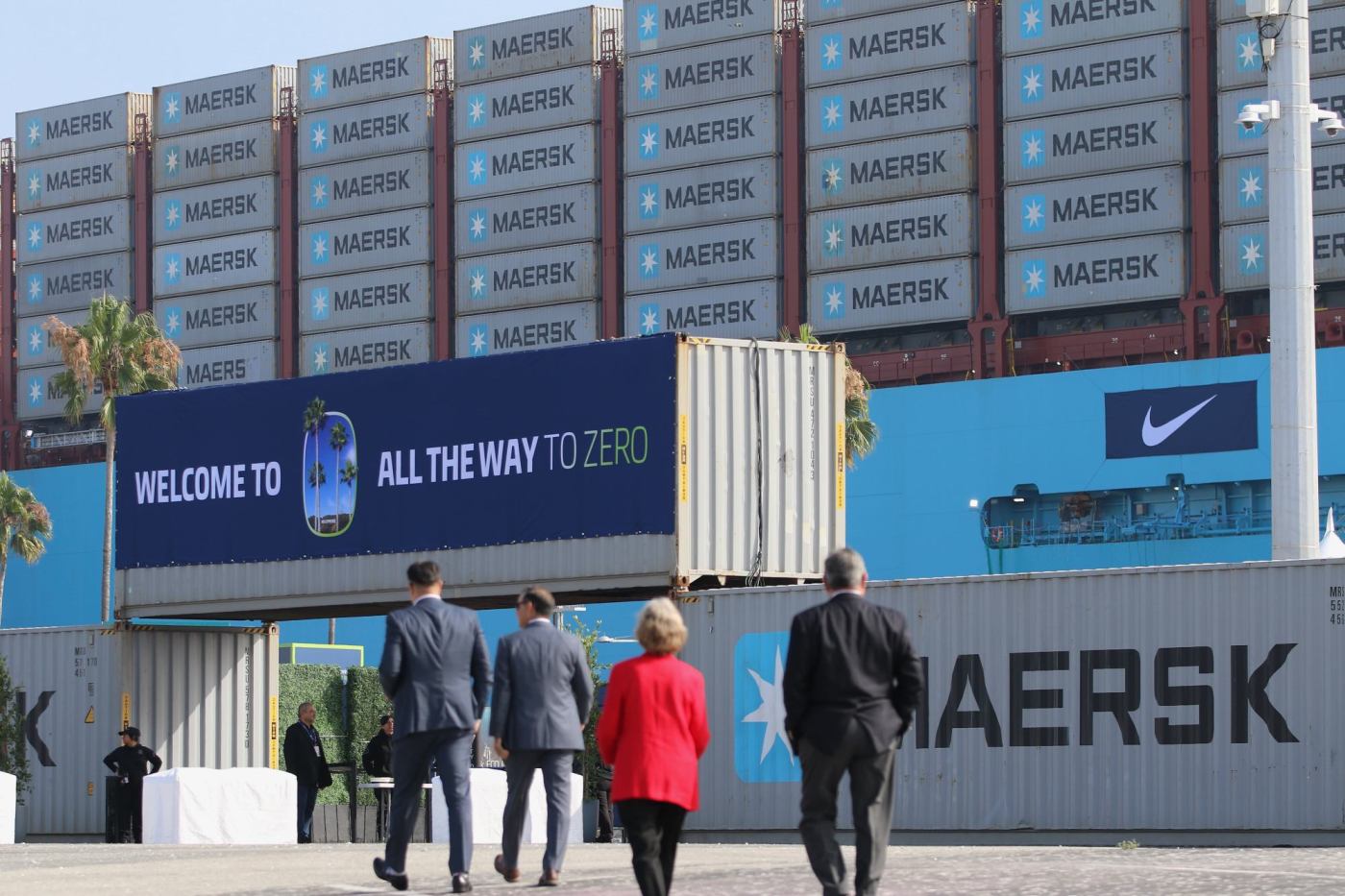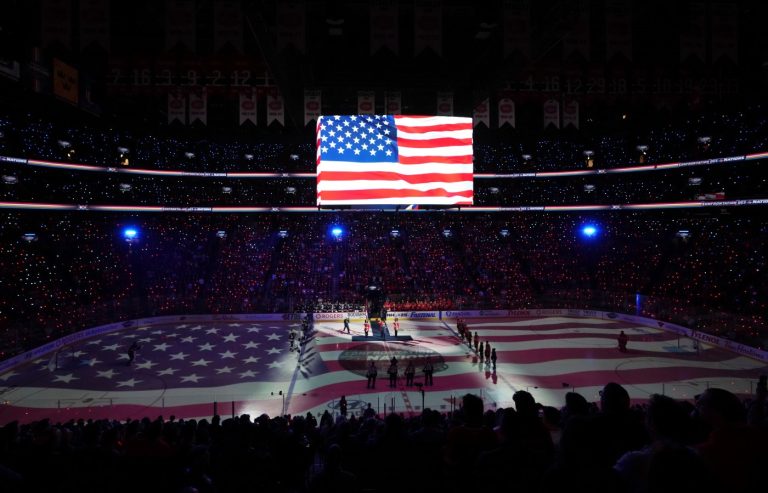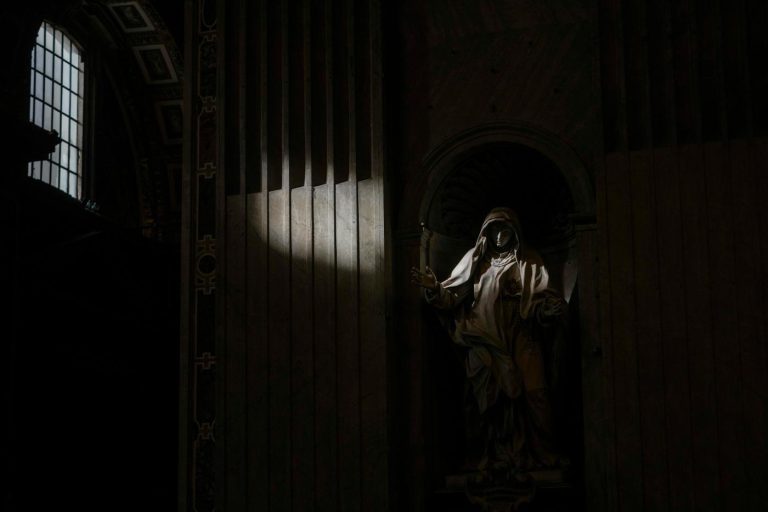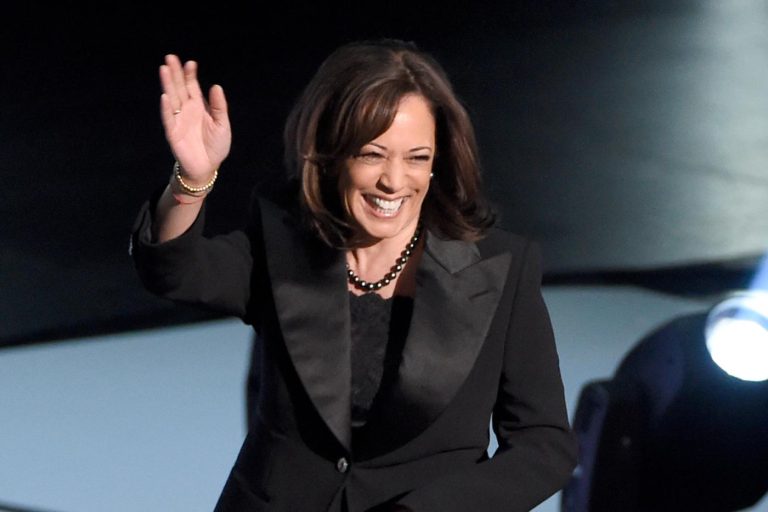With the smash of a rope-tied bottle of Piper-Heidsieck champagne hitting the bow and a loud horn blast, a cheer went up as the first green cargo ship to visit the U.S. was officially named and christened at the Port of Los Angeles on Tuesday, Aug. 27.
Named the “Alette Maersk” — for Alette Maersk Mc-Kinney Sørensen, a daughter of the company’s founding family — a tarp covering the name was dropped during the ceremony to unveil the new moniker.
The massive, 350-meter-long cargo ship rolled out by A.P. Moller – Maersk took center stage as hundreds of invited guests marveled at the sight of the docked vessel in the Outer Harbor, before listening to speakers hailing its significance. Many folks later went aboard for tours, which will continue for the public on Wednesday, Aug. 28, for those who have already signed up early and have reservations.
Maersk — a Danish shipping and logistics company founded in 1904 by Arnold Peter Møller and his father, Peter Mærsk Møller — has ordered 20 additional methanol-enabled vessels and has partnered with Nike in its efforts to develop and produce clean ships.
The ship, which can carry 16,592 container units, is the fifth container vessel in the Maersk fleet that can sail on green methanol, an alternative to conventional bunker oil.
The company aims to reach net-zero greenhouse gas emissions in its fleet by 2040 under the logo “All the Way to Zero,” Maersk CEO Vincent Clerc said.
“Close to 3% of the world’s greenhouse gases are emitted from ships, making the shipping industry a significant contributor to environmental impact,” Clerc said in his formal remarks. “While moving goods by sea is by far the most effective and environmentally friendly mode of transportation, the sheer volume (90% of all trade is ocean-based) leads to a substantial carbon footprint.
“If we look beyond shipping and include planes, trucks, railroads, ports and warehouses – the global supply chain accounts for 11%,” he added. “This journey towards decarbonizing shipping and logistics is of paramount importance to A.P. Møller-Maersk. Our near-term target is to transport at least 25% of our ocean cargo using low-emission fuels by 2030, with the ultimate goal of achieving net-zero emissions across the entire business by 2040.”
U.S. Rep. Nanette Barragan, D-San Pedro, summed it all up this way: “To see the commitment of Maersk to do this is a big deal.”
But others, she said, now need to “step up” and join the battle that supporters hope will slow climate change.
Among those attending the festivities, Christopher Allen, director of Health, Safety, Security and Environment for APM (Maersk) Terminals at Pier 400, said the new ship primarily will serve the Asia-to-Europe routes but could also call at the Port of Los Angeles from time to time.
When it docked at Pier 400 several days ago, some boxes were unloaded and it was carrying additional empty containers this week to return to Asia.
While the ship is large, Allen said, the terminal serves other vessels that are comparable in size.
One of the speakers, Venkatesh Alagirisamy, chief supply chain officer for Nike, said the ship represents “a beacon of hope for a sustainable future.”
But, he added, “no one can do this alone.”
Also on hand was the ship’s officially appointed “godmother,” Chloe Kim of Long Beach, a two-time Olympic gold medalist snowboarder.
“How cool is this,” she said, “to be the godmother of a shipping vessel.”
Kim, 24, spoke of how shifts in the climate are is affecting winter sports, with shorter snow seasons and less snowfall.
“I’ve read that almost 90% of trade is ocean-based,” she said. And that, she added, comes with a “significant carbon imprint.”
Ships have posed a particular challenge as ports move to join the effort to clean up the industry. While trucks and cargo handling equipment all fall under port and air quality mandates established by local regulatory agencies, ships do not have similar regulations over them.
They also remain in service for many years — as they are difficult and expensive to replace.
Related Articles
Can high-demand California and the US install enough EV chargers by 2030?
South Bay school district plans for solar panels, EV charging station generate concerns
Joby Aviation rolls third aircraft off production line at its facility in Monterey County
California sales of zero-emission vehicles hit 25.7% but are numbers increasing fast enough?
‘Charger hogs’ are ruining the electric vehicle experience
The naming ceremony combined “thousands” of years of tradition, organizers said, after the crowd had moved to the side of the ship to take part in the honors.
The tradition calls for champagne and friends to gather as witnesses dockside as ship officers are presented with gifts and acknowledged.
Then there is the pronouncement of “godspeed” for the vessel’s safe — and, in this case, clean — travels.












